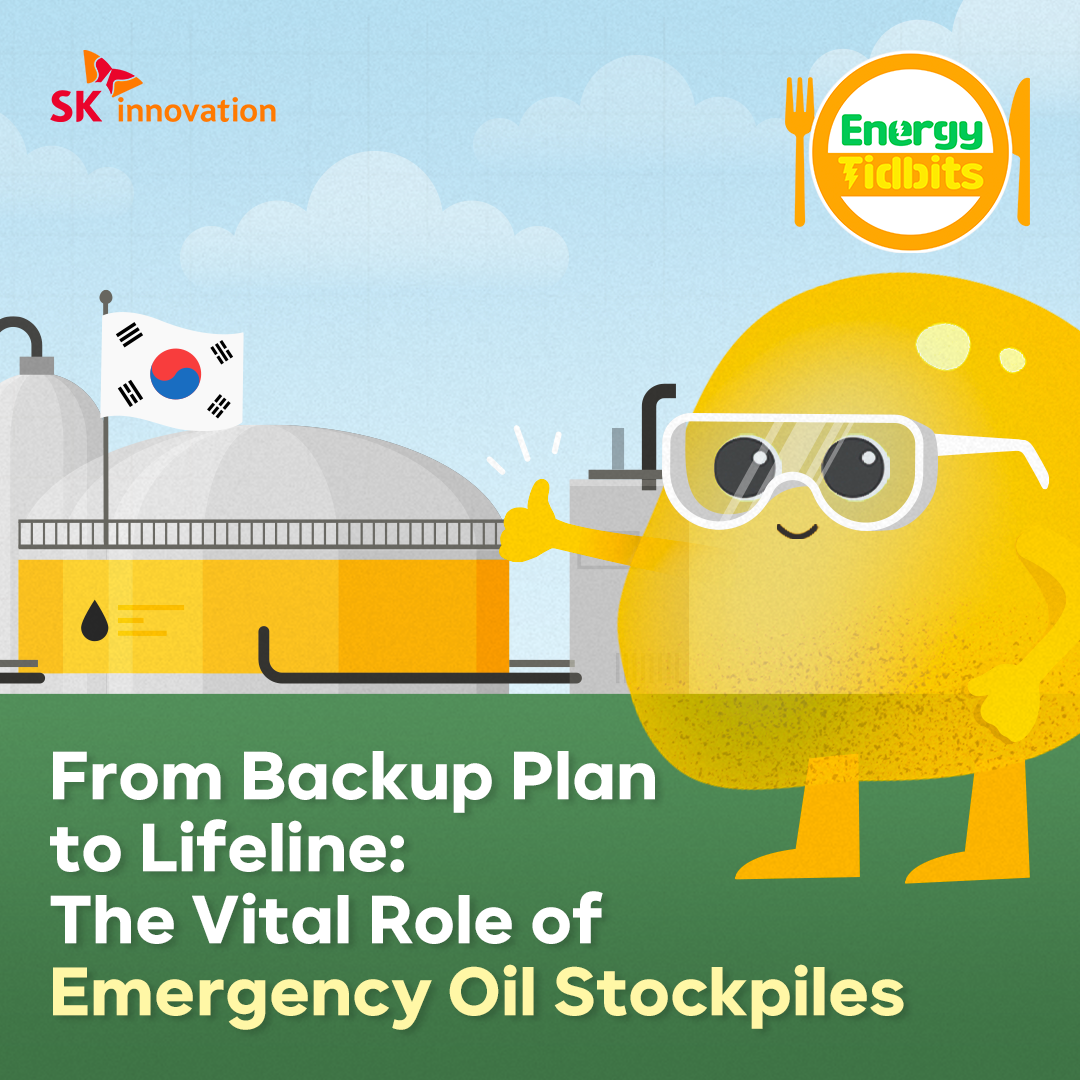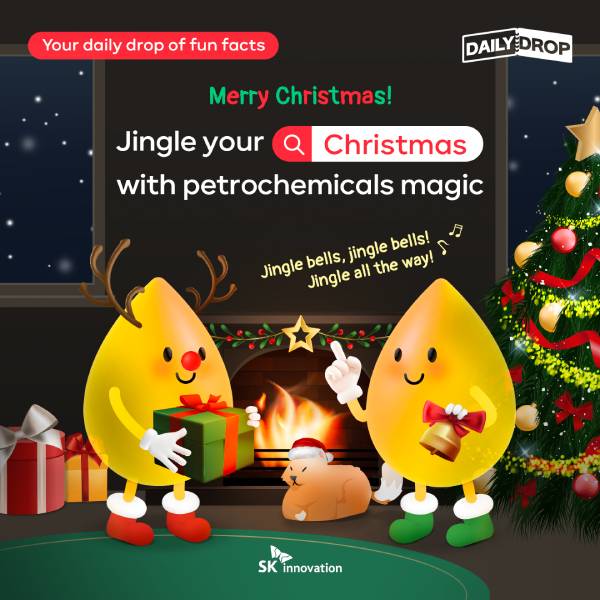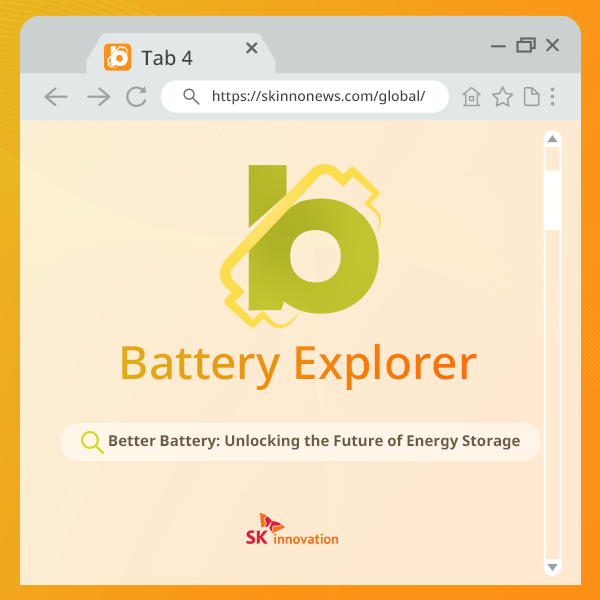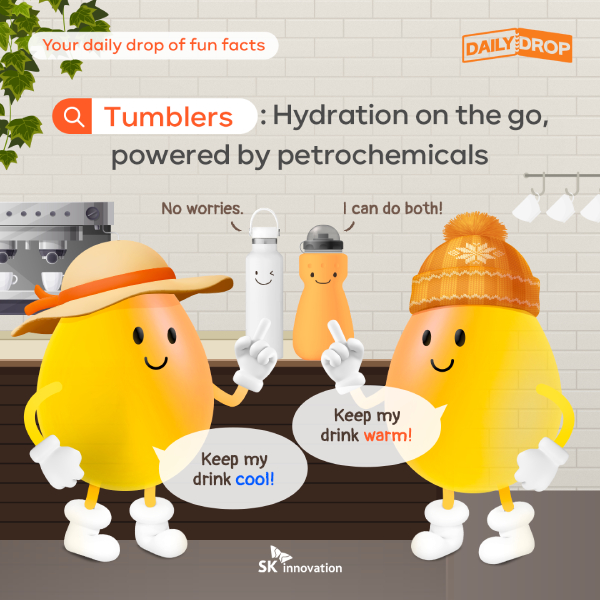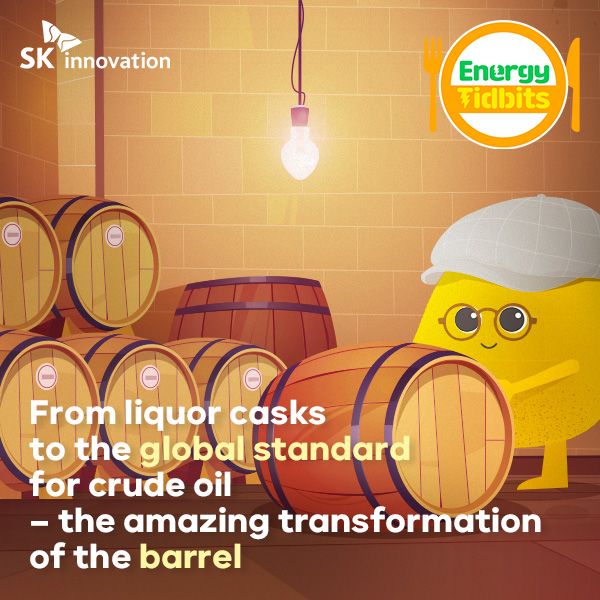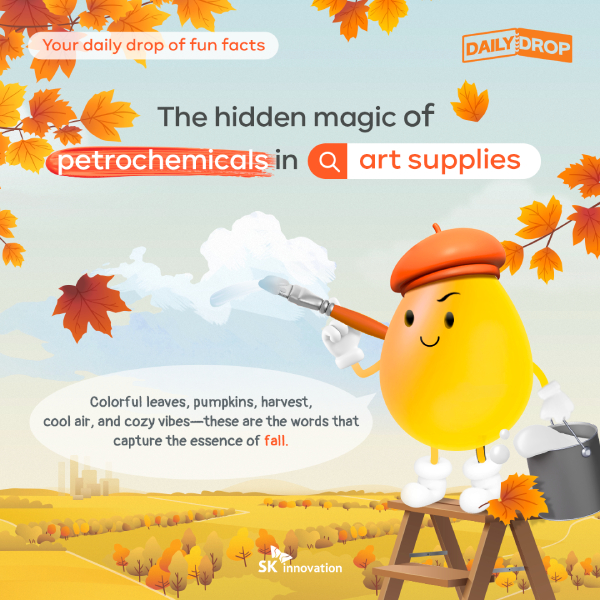 Trends & Reports
Trends & Reports
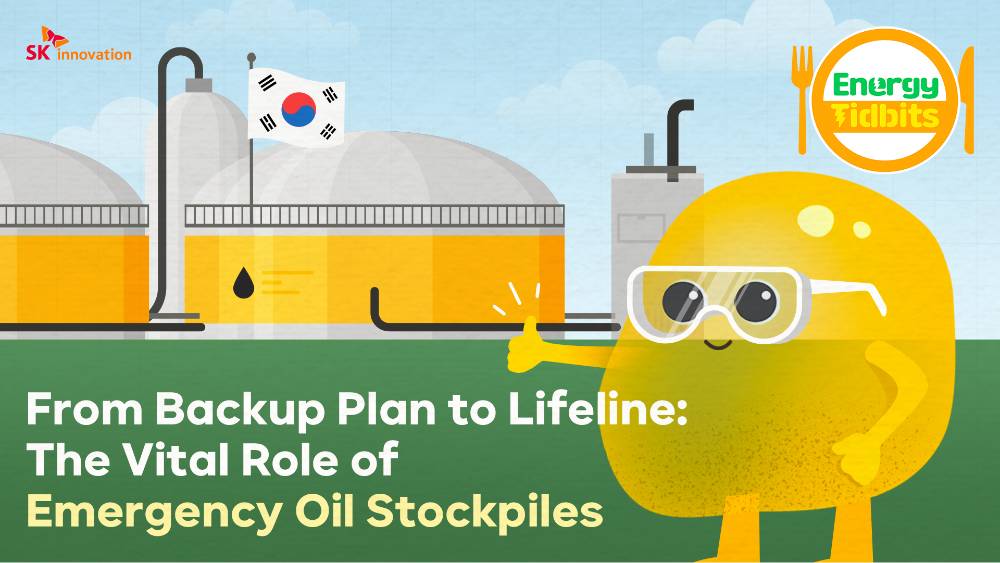
Oil prices quadrupled in just three months, causing factories to halt operations and leaving households unable to heat their homes. In Maryland, USA, people queued for nearly 8 kilometers at gas stations in a desperate attempt to buy fuel. The crisis led to violent incidents over fuel access. Gas stations used flags—green for available fuel and red for none—and implemented a system where cars with even-numbered license plates could refuel on even-numbered days, and odd-numbered plates on odd days. This was a direct result of the first oil crisis, sparked 50 years ago by the 1973 Yom Kippur War in the Middle East.
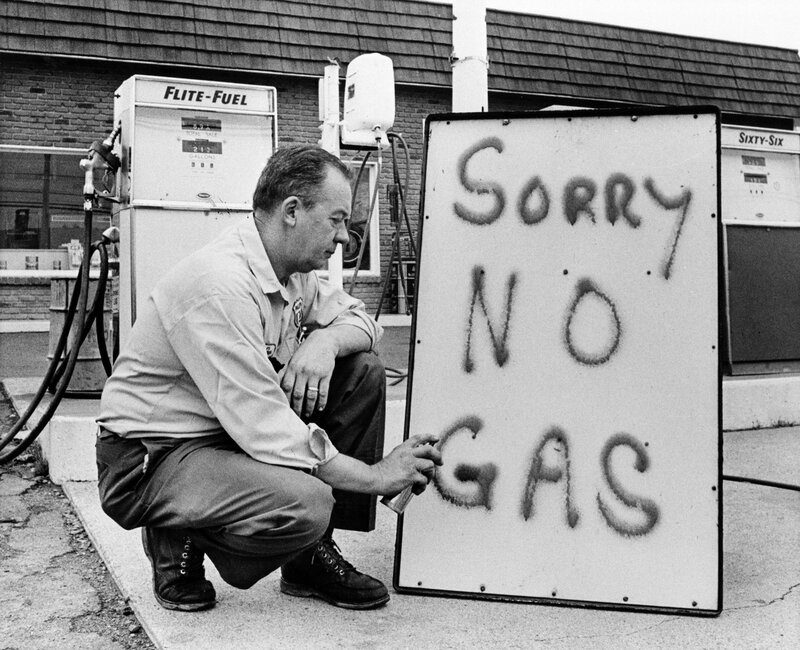
▲ A gas station employee indicating a fuel shortage (Source: PENGlobal)
| The Crucial Role of Oil Stockpiles During Energy Crises?
The first oil crisis was a stark wake-up call about the importance of stability in the global energy market. In its aftermath, the International Energy Agency (IEA) was established in 1974. Sixteen OECD member countries at the time, including the United States, West Germany, the United Kingdom, Canada, and Spain, agreed to cooperate in addressing energy crises. South Korea joined this global effort by becoming an IEA member in March 2002 to strengthen its energy security.
Since its inception, the IEA has played a vital role in mitigating energy crises and stabilizing markets through the release of strategic oil reserves. During the Gulf War in 1991, when Iraq invaded Kuwait and destroyed its oil fields, the UN Security Council imposed an oil embargo on Iraq. To counter the resulting oil crisis, the IEA released approximately 17 million barrels of strategic reserves for the first time. In 2005, when Hurricane Katrina disrupted oil production facilities in the United States and Mexico, the IEA released about 60 million barrels to alleviate the crisis. Similarly, in 2011, the IEA released another 60 million barrels when the Libyan Civil War halted oil production in one of the major oil-producing countries. As an IEA member, South Korea contributed to this international effort by supplying 3.4 million barrels.
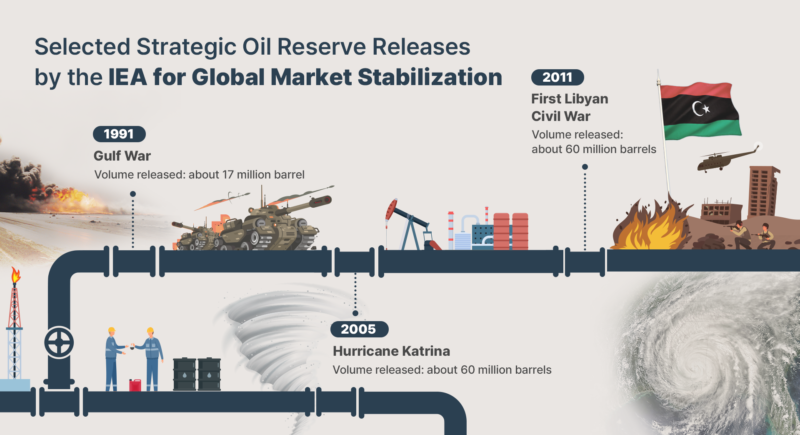
| Where and How Is Oil Stockpiled?
To enhance the stability of oil supplies and prepare for market volatility, oil stockpiling generally falls into two main categories: “stockholding agreements” and “storage facilities.”
■ Stockpiling Agreements
A “stockholding agreement” involves securing a specified amount of oil through contractual arrangements. This method is primarily used to guard against market fluctuations and ensure access to oil in emergencies. The contract between oil sellers and buyers is often referred to as a “ticket.” Buyers pay an agreed-upon amount in advance to secure the oil under the terms outlined in the contract. When governments use this method, they typically enter into agreements with private companies rather than operating storage facilities themselves. This approach reduces the burden on governments to maintain storage infrastructure and allows them to leverage the private sector’s capabilities.
■ Storage Facilities
While stockpiling agreements can be cost-effective by eliminating the need for secure oil without constructing the need for building storage facilities, they have the limitation of not involving physical oil possession. To address this, many governments around the world have established oil storage facilities, such as aboveground tanks (aboveground storage bases) and underground storage caverns (underground storage bases). Typically, above-ground tanks are suitable for storing up to 5.6 million barrels of crude oil, while underground storage caverns are more advantageous for larger quantities.
Aboveground tanks can be built relatively quickly, with a construction period of about 3 to 5 years. They are also easy to build and expand. However, they are generally more vulnerable to natural disasters, such as earthquakes, and have a shorter lifespan of around 15 years.
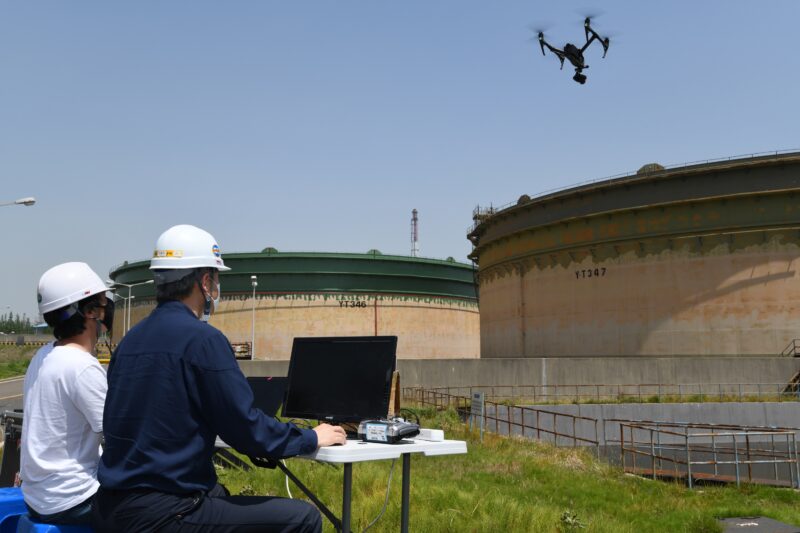
▲ A routine inspection of ground tanks (crude oil storage tanks) using drones conducted at SK Innovation Ulsan Complex
In contrast, underground storage caverns are built hundreds of meters deep within salt layers or rock formations. They are resistant to shocks and temperature changes and can store oil for over 40 years. Additionally, they can be constructed beneath the seabed, offering efficient space utilization and suitability for large-scale storage.
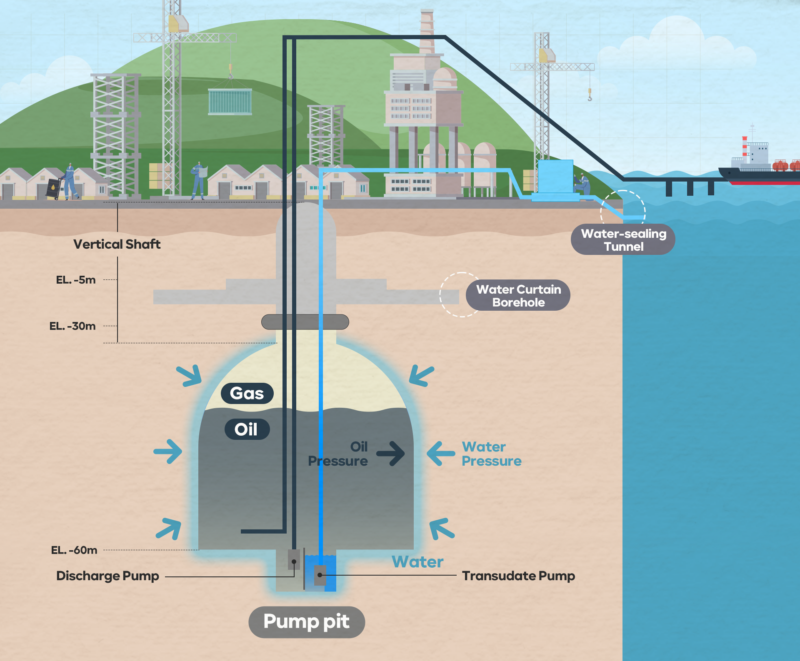
▲ Conceptual Diagram of an Underground Oil Storage Facility (Image courtesy of Korea Oil Love Webzine)
| The history of South Korea’s oil industry and reserves
During the late Joseon Dynasty, as Western influences began to flow into Joseon (the name for Korea at that time), the country’s first oil storage facility was established near the coast of Wolmido, Incheon. In 1897, Townsend & Co. (Walter Davis Townsend), which had signed an exclusive oil import contract with Standard Oil, the largest American oil company at the time, built an oil storage warehouse capable of holding 500,000 boxes of kerosene on the eastern coast of Wolmido. This storage facility was popularly referred to as the “Western oil drum as large as Namsan” and became a topic of great interest at the time. The first imported oil in Joseon was sold nationwide under the brand names “Solpyo” and “Seungnipyo,” packaged in wooden boxes.
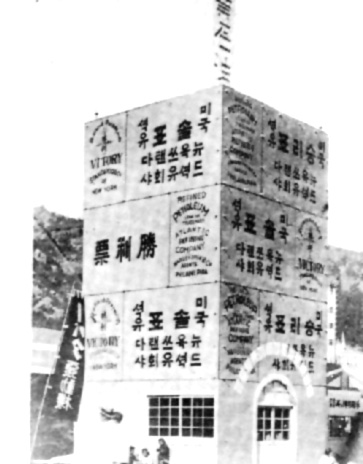
▲ ‘Solpyo’ Oil by Standard Oil, exclusively imported and sold by Townsend Company during the late Joseon Dynasty (Source: Our History Net)
Subsequently, Joseon’s oil market transitioned from a monopoly to a competitive arena, as companies from various countries, including Britain’s Royal Dutch Shell, entered the market. In the 1930s, as Japan intensified its continental invasion and turned the Korean Peninsula into a military supply base, it began stockpiling oil and constructing refining facilities. To support these efforts, Japan established Chosun Oil in 1935 and completed the Wonsan Refinery in 1938, producing 300,000 tons of oil annually.
After Korea’s liberation, the supply of petroleum products in South Korea was managed by the Petroleum Distribution Agency (PDA) under the US military government, which began to establish a supply system. In 1949, the Korea Oil Storage Company (KOSCO) was founded to oversee the storage and sale of petroleum products. During the Korean War, as companies like Standard Oil withdrew, KOSCO also handled direct sales of petroleum products. Following the war, to meet the rising demand for oil, the government signed an oil operation agreement with the United States in 1955, laying the groundwork for a stable oil supply. On October 13, 1962, amid the lack of industrial infrastructure following the Korean War, South Korea’s first oil refining company, now known as SK Innovation, was established. This marked the beginning of a new era in South Korea’s petrochemical industry, becoming a driving force for competitive growth and innovation.
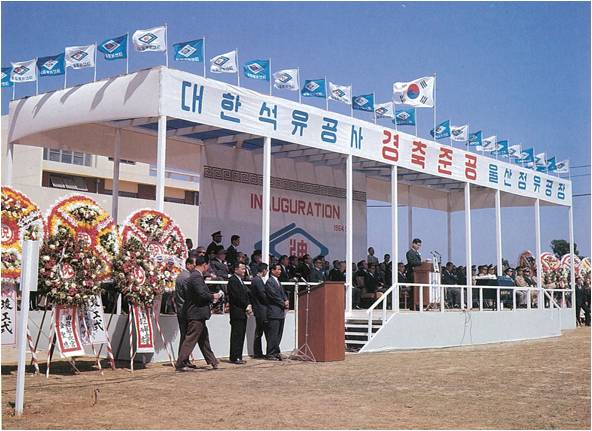
▲ Completion ceremony of the first oil refinery by the Korea National Oil Corporation in 1964 (the predecessor of SK Innovation)
After the first oil shock in the 1970s, South Korea took steps to prepare for energy emergencies by constructing its first oil reserve facility, the Mapo Oil Reserve Base, located on Maebongsan, Sangam-dong, Seoul, it housed five oil tanks. Currently, there are nine oil stockpile facilities across the country: Guri (1981), Ulsan (1981), Geoje (1985), Pyeongtaek (1989), Yongin (1998), Yeosu (1998), Gokseong (1999), Donghae (2000), and Seosan (2005).
The Mapo Oil Reserve Base originally stored approximately 69.07 million liters of oil, enough to supply Seoul residents for about a month. However, it was closed in 2002 for safety reasons ahead of the FIFA World Cup jointly hosted by South Korea and Japan. In 2013, following a public idea competition, the site was transformed into the “Oil Tank Culture Park,” repurposing the facility as a cultural space.
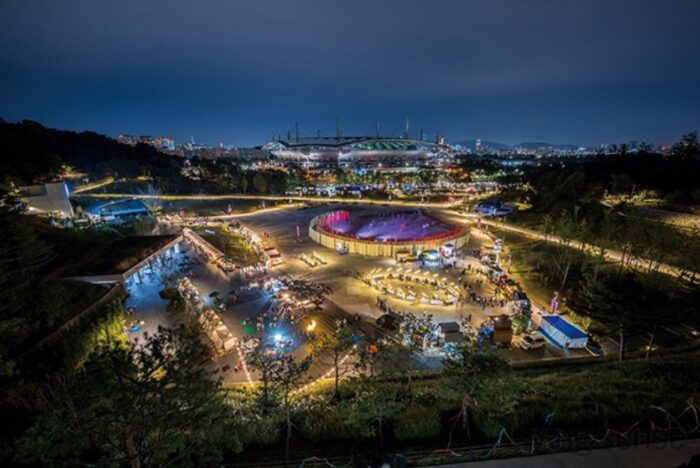
▲ Exterior view of the Oil Tank Culture Park (Source: Parks of Seoul)
The previously vacant outdoor spaces within the oil reserve base were transformed into open playgrounds for children. Additionally, the oil tanks, ranging from 15 to 38 meters in diameter and 13 to 15 meters in height, were repurposed into community spaces such as classrooms, meeting rooms, and cafeterias. Notably, a tank that once stored diesel was transformed into an outdoor stage and performance venue, while another that stored gasoline was converted into a Glass Pavilion, a multipurpose space for exhibitions and workshops. These transformations have established the site as a vibrant cultural space for the community.
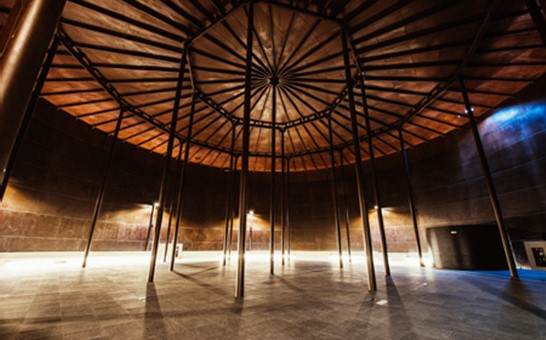
▲ Interior view of an oil tank at the Oil Tank Culture Park (Source: Parks of Seoul)
Today, oil stockpiling serves as the last line of defense in maintaining stability amid global energy crises. Ensuring a stable energy supply is a critical task that directly impacts a nation’s economy and the livelihood of its citizens. As the world’s fourth-largest oil importer, South Korea is particularly susceptible to fluctuations in global oil prices.
In addition to strategic oil reserves, developing independent oil resources is essential for enhancing energy security. South Korean companies are shifting from merely participating in oil ventures to securing direct operational rights. SK Innovation’s oil exploration subsidiary, SK Earthon, has acquired operating rights in oil fields in China, Vietnam, and Malaysia, reflecting this strategic shift. To remain resilient amid uncertain changes, thorough preparation for the future is crucial. This underscores the importance of South Korea’s oil stockpile facilities and independent overseas oil field operations in ensuring energy stability.
– [Energy Tidbits] From liquor casks to the global standard for crude oil – the amazing transformation of the barrel
– [Energy Tidbits] How kerosene that once illuminated the night now powers giant airplanes
– [Energy Tidbits] From “Light and Salt” to “Light and Petroleum,” discovering the secrets behind “treasure hunts” through the evolution of drilling techniques
– [Energy Tidbits] Petroleum was a key ingredient in ancient mummification?










 Youtube
Youtube Facebook
Facebook Instagram
Instagram Linkedin
Linkedin








